Audi RS5 Cabriolet
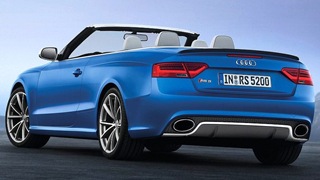 Yesterday Audi gave the sports car fans one more reason to celebrate. As if it wasn’t enough to release one more member of the famous RS line, this one is another convertible, like TT and R8’s versions, but more opulent than the first and much cheaper than the second. They already produce the RS5 coupé and the A5 Cabriolet even as S5, so it must have been only the matter of putting some pieces together to obtain this one. The fact is you’re going to read about an amazing union of style and high performance.
Yesterday Audi gave the sports car fans one more reason to celebrate. As if it wasn’t enough to release one more member of the famous RS line, this one is another convertible, like TT and R8’s versions, but more opulent than the first and much cheaper than the second. They already produce the RS5 coupé and the A5 Cabriolet even as S5, so it must have been only the matter of putting some pieces together to obtain this one. The fact is you’re going to read about an amazing union of style and high performance.
It’s widely known that convertibles, even the roadsters, will always have slightly worse performance than their coupé versions because of the aerodynamical differences. The air starts to flow through the windshield but right after that starts to disorder itself due to the abrupt change from the plain surface to the open interior. Their coupé variations, on the other hand, have a more harmonic design regarding these effects, which makes them achieve lower numbers of drag coefficient. Considering that this difference becomes more intense as the considered speed grows, this fact turns very important among sports cars because it can be used to divide the customers between the two options. Basically, the typical coupé buyer looks for the highest speed possible to take opportunities such as the German autobähnen or some eventual laps at race circuits in the events organized by the car’s brand. The cabriolet customers still look for a really fast car, but their main concern is elegance and style. They’re usually the kind of drivers who like to travel with the open roof and enjoy the weather and the luxury of their car. So they really don’t get too much worried about how much their car will run, but how it’ll be done.
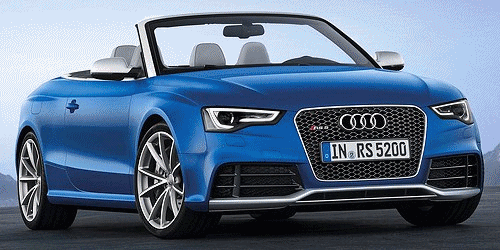 Nevertheless, it’s really interesting to take a look on what it has besides the S5 package. Being an Audi RS brought to him larger air intakes at the front bumper and wider exhaust pipes, besides of the entire lower integrated spoilers set. An excellent change is that the wheels got different, instead of using the same model of the rest of this line, and the interior was improved, but this part will be mentioned later. The suspension got lower and more rigid, the brakes were redimensioned and now include the front ones in carbon-ceramic, the wheels are bigger at the rear axle (it uses 19” and 20”), and the roof can come in black, brown, gray and red and its electric operation can be done until when at 50 km/h, taking fifteen seconds. The pictures already show the special seats, which can come in two options of gray, the flat-bottom steering wheel some details in a material who resembles carbon fiber and the classic complete luxury and comfort equipment. The mechanical part is shared with the coupé, so this RS5 also brings the quattro traction system, S-tronic seven-speed and double-clutch transmission and the V8 4.2 engine, which generates 450 hp. All this power takes this cabriolet from zero to 60 mph (96 km/h) in 4s9, while the top speed doesn’t escape from the electronic limit.
Nevertheless, it’s really interesting to take a look on what it has besides the S5 package. Being an Audi RS brought to him larger air intakes at the front bumper and wider exhaust pipes, besides of the entire lower integrated spoilers set. An excellent change is that the wheels got different, instead of using the same model of the rest of this line, and the interior was improved, but this part will be mentioned later. The suspension got lower and more rigid, the brakes were redimensioned and now include the front ones in carbon-ceramic, the wheels are bigger at the rear axle (it uses 19” and 20”), and the roof can come in black, brown, gray and red and its electric operation can be done until when at 50 km/h, taking fifteen seconds. The pictures already show the special seats, which can come in two options of gray, the flat-bottom steering wheel some details in a material who resembles carbon fiber and the classic complete luxury and comfort equipment. The mechanical part is shared with the coupé, so this RS5 also brings the quattro traction system, S-tronic seven-speed and double-clutch transmission and the V8 4.2 engine, which generates 450 hp. All this power takes this cabriolet from zero to 60 mph (96 km/h) in 4s9, while the top speed doesn’t escape from the electronic limit.
RAM ProMaster
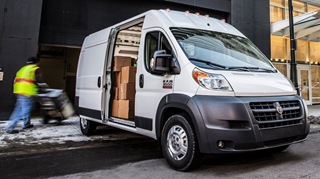 Fiat Group’s latest releases could be seen as a nice class of how to practice badge engineering avoiding its tricks. Like most of the decisions regarding new cars’ releases, there are so many definitions to set that the number of possibilities borders being endless… but to achieve a high-potential vehicle really requires dealing with those. So after creating Fiat Freemont as Dodge Journey’s twin in a way that brought great sales for both, now it’s time to follow the reverse path and adding this whole commercial line to RAM’s showroom.
Fiat Group’s latest releases could be seen as a nice class of how to practice badge engineering avoiding its tricks. Like most of the decisions regarding new cars’ releases, there are so many definitions to set that the number of possibilities borders being endless… but to achieve a high-potential vehicle really requires dealing with those. So after creating Fiat Freemont as Dodge Journey’s twin in a way that brought great sales for both, now it’s time to follow the reverse path and adding this whole commercial line to RAM’s showroom.
Long story short, yes, this is a rebadged third-generation Fiat Ducato, which has been succcesssy sold in Europe for about seven years also as the French brother Peugeot Boxer. Since commercial vehicles have very different concerns, such as maximizing the payload and reducing the costs, it’s easy to understand the larger lifecycles these cars usually have. In other words, these customers see aging projects as reliable ones, rather than preferring stylish and always up-to-date designs. Ducato has sold millions worldwide due to its renowned efficiency and resistance, which couldn’t be better showed than with how easy is to see its versions at the European streets; this is an interesting sales argument for this category, rather than having the very latest technologies. This and the fact that it would be pointless to invest in structural changes to an already well-accepted project is what resulted on ProMaster arriving at the US changing only all the badges and the front bumper, to follow RAM’s corporate design. Some Dodge fans might still dislike separating the pick-up truck into a particular brand, but now it’s possible to see the Group’s point: having an exclusive brand gives the opportunity to get dedicated to the commercial vehicles without affecting Dodge’s sporty image.
 In fact, this dedication is so big that ProMaster already comes in Ducato’s entire list of options, which denotes RAM’s intention of having an important share of this category’s sales. In other words, the new van comes in two roof heights (90 and 101 inches), three wheelbase lenghts (118, 136 and 159 inches) and four cargo floor lenghts (105, 123, 146 and 160 inches), not to mention the chassis cabs. This car’s structure was projected to be efficient, and this is seen in items such as rear clamshell doors with 260° opening, s-size sliding side doors, not-too-high ride height to facilitate access and all the vehicle systems located in the front, making the rear end very easy to modify. The biggest changes came to the powertrain, in order to adapt the line to Chrysler Pentastar V6 3.6L and its 280-hp power and 258 lb-ft torque; the diesel option is brought by Fiat, though: a four-cylinder EcoDiesel turbocharged 3.0L with 174 hp and 295 lb-ft. The first engine always comes with automatic six-speed transmission, while the second always uses a six-speed automated manual gearbox, but the traction system is always front-wheel-drive. This car will hit the streets in the next summer, highlighting numbers as a payload capacity of 5,145 pounds and, according to RAM, the status of being the best in class for cargo capacity, ceiling height, fuel economy, low load floor and step-in height.
In fact, this dedication is so big that ProMaster already comes in Ducato’s entire list of options, which denotes RAM’s intention of having an important share of this category’s sales. In other words, the new van comes in two roof heights (90 and 101 inches), three wheelbase lenghts (118, 136 and 159 inches) and four cargo floor lenghts (105, 123, 146 and 160 inches), not to mention the chassis cabs. This car’s structure was projected to be efficient, and this is seen in items such as rear clamshell doors with 260° opening, s-size sliding side doors, not-too-high ride height to facilitate access and all the vehicle systems located in the front, making the rear end very easy to modify. The biggest changes came to the powertrain, in order to adapt the line to Chrysler Pentastar V6 3.6L and its 280-hp power and 258 lb-ft torque; the diesel option is brought by Fiat, though: a four-cylinder EcoDiesel turbocharged 3.0L with 174 hp and 295 lb-ft. The first engine always comes with automatic six-speed transmission, while the second always uses a six-speed automated manual gearbox, but the traction system is always front-wheel-drive. This car will hit the streets in the next summer, highlighting numbers as a payload capacity of 5,145 pounds and, according to RAM, the status of being the best in class for cargo capacity, ceiling height, fuel economy, low load floor and step-in height.
Citroën DS3 Cabrio
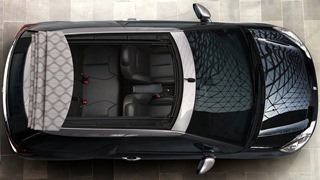 Releasing a new car can always lead to surprises. There are some categories and some cars whose history enables to have certain expectations, but each and every one always has at least a minimum potential of surprising its own brand. Some unfortunately end up as big failures even though being excellent products, but it’s interesting to observe that others hit the streets escaping from the existing “guaranteed-sales formulas” and turn out creating one of their own. This car is Citroën’s attempt to expand DS3’s unexpected success.
Releasing a new car can always lead to surprises. There are some categories and some cars whose history enables to have certain expectations, but each and every one always has at least a minimum potential of surprising its own brand. Some unfortunately end up as big failures even though being excellent products, but it’s interesting to observe that others hit the streets escaping from the existing “guaranteed-sales formulas” and turn out creating one of their own. This car is Citroën’s attempt to expand DS3’s unexpected success.
Citroën DS3 deserves this bigger credit because of all the context in which it was released. Fiat, Mini and Volkswagen were already enjoying the success of 500, Cooper and New Beetle specially in Europe, which was leading to firming them as members of a brand new category: the retro hatchbacks, whose bigger prices were compensated by cutting-edge technologies and plenty of luxury wrapped in 1950s-inspired designs. Since those three were having good sales, it was expected that more automakers joined them, like the French ones. Citroën was already preparing a car with their size and luxury level, but originally not to compete with them: their hatchback was meant to stabilish the DS line among the world, the brand’s division dedicated to create luxury alternatives to its own conventional vehicles. Therefore, DS3 was intended to be C3’s classier brother, making much bigger concessions to form over function, such as having only two doors and four seats, but also clearly expressing the common DNA, sharing platform and even some visible items, like the headlights. It didn’t take long to be very well-accepted, but the surprise came from the fact of this car starting to compete with the retro ones, even though DS3’s style is the exact opposite – from every angle it’s observed there’s something expressing sporty futurism, big or small.
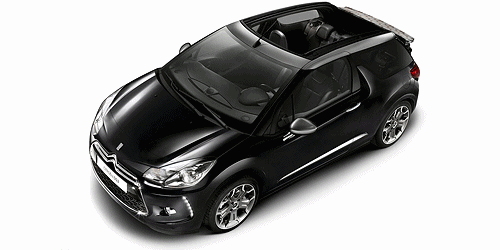 In fact, it’s even possible to infer that this market’s unknown flexibility was what motivated Audi to release A1 already one year after Citroën’s car, also using a modern design, and most recently Opel, with Adam’s mixture of old and new elements. This versatility is also being used by the convertible versions of these cars: Cooper uses a s cabriolet body, while 500C decided to keep the whole side panels and open only roof and rear windshield… just like this article’s car has now decided to present. DS3 Cabrio’s removable roof has electric operation, being able to stop as s closed, s removed and folded right above the trunk lid, and an intermediate option in which the fabric roof stays on the top, also folded in a way that resembles a spoiler – going between the extreme positions takes about sixteen seconds and can be done while driving at up to 75 mph. Although the pleasure of driving without roof is partially lost with this solution, it’s also important to notice that it keeps very much of the car’s safety untouched, because the structural changes are kept to a minimum. So if Citroën had no need to apply extensive stiffness reinforcements, it became free to invest on another topic which these cars’ customers find very interesting: Cabrio’s seats will have three color options, while the central console makes a contrast between piano black and six other options. And the roof, which looks exactly like the rigid ones when closed, can come in ten different fabric options.
In fact, it’s even possible to infer that this market’s unknown flexibility was what motivated Audi to release A1 already one year after Citroën’s car, also using a modern design, and most recently Opel, with Adam’s mixture of old and new elements. This versatility is also being used by the convertible versions of these cars: Cooper uses a s cabriolet body, while 500C decided to keep the whole side panels and open only roof and rear windshield… just like this article’s car has now decided to present. DS3 Cabrio’s removable roof has electric operation, being able to stop as s closed, s removed and folded right above the trunk lid, and an intermediate option in which the fabric roof stays on the top, also folded in a way that resembles a spoiler – going between the extreme positions takes about sixteen seconds and can be done while driving at up to 75 mph. Although the pleasure of driving without roof is partially lost with this solution, it’s also important to notice that it keeps very much of the car’s safety untouched, because the structural changes are kept to a minimum. So if Citroën had no need to apply extensive stiffness reinforcements, it became free to invest on another topic which these cars’ customers find very interesting: Cabrio’s seats will have three color options, while the central console makes a contrast between piano black and six other options. And the roof, which looks exactly like the rigid ones when closed, can come in ten different fabric options.
Mazda 6
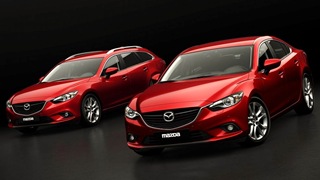 Now we can go to the Moscow Auto Show without so much anxiety. Mazda released yesterday the first official information about the new generation of their luxury sedan whose official announcement will be made at that event. Until now there’s only information about the Russian version, but it can’t change so much to the other markets. The fact is this beautiful Japanese sedan has not evolved only at the usually expected aspects, but also in its whole concept. And you can read all about it at this article.
Now we can go to the Moscow Auto Show without so much anxiety. Mazda released yesterday the first official information about the new generation of their luxury sedan whose official announcement will be made at that event. Until now there’s only information about the Russian version, but it can’t change so much to the other markets. The fact is this beautiful Japanese sedan has not evolved only at the usually expected aspects, but also in its whole concept. And you can read all about it at this article.
It was already widely known that the new Mazda6 was going to be the production version of the Takeri concept-car, which was publicly presented last year at Tokyo. But the point made by this sedan can be explained starting with the changes at its measures: it got 11 cm (4,33 in) larger and its distance between axles increased in 10,5 cm (4,13 in), but it kept short with its 1,45 m (4,76 ft) of height and opulent, with 1,86 m (6,1 ft) of width. These changes reveal the intention of keeping it sporty, but much more sophisticated than the previous generation. The front end shows proudly the style started with CX-5, with a big air intake that found a nice way of getting elegant, instead of giving a brute sensation. These organic shapes can remeber the Mercedes-Benz’s models, but they escaped of their heavy lines to combine with perfectly-sized headlights, creating a slightly taller central zone which is followed by a large hood, that gives the always-pleasant sensation of plenty of power under it. This solution continues at the sides, and it would be easy to think it abandoned the German cars to take inspiration from the Italian ones, but this thought is broke by the fact that Mazda gave an excellent Japanese touch to it.
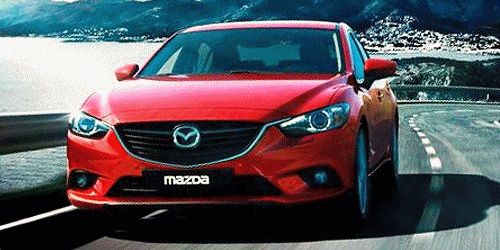 Mazda6 also escaped from the now exausting-to-see Japanese car style of lots of agressive cuts and folds, and seems to have found an evolution of that. We can still see some contours remembering its previous generation, like the windows’ global shape, but now we can see it reached a consensus between the European and Japanese style. Now it is definitely a worldwide car, which never denies its origin, but got much more classy to now please a bigger public, instead of using a too much Eastern look. And to prove that we can return to the measure changes: it took advantage of being short and wide to get a more mature sportiness than the previous one. Besides that, we can also see some North-american influence at the length increase: the sideview shows resemblance with luxury sedans like Chevrolet Impala and the US-focused Honda Accord and Toyota Camry: the Mazda sedan features a smooth roof fall into a classical rear end with big tail lights, which take some space from the sides and got connected by a metal line. In fact, it’s very nice to see that even this little detail got its attention: its irregular shape helps it to avoid getting too much old-fashioned, like at the first Hyundai Azera.
Mazda6 also escaped from the now exausting-to-see Japanese car style of lots of agressive cuts and folds, and seems to have found an evolution of that. We can still see some contours remembering its previous generation, like the windows’ global shape, but now we can see it reached a consensus between the European and Japanese style. Now it is definitely a worldwide car, which never denies its origin, but got much more classy to now please a bigger public, instead of using a too much Eastern look. And to prove that we can return to the measure changes: it took advantage of being short and wide to get a more mature sportiness than the previous one. Besides that, we can also see some North-american influence at the length increase: the sideview shows resemblance with luxury sedans like Chevrolet Impala and the US-focused Honda Accord and Toyota Camry: the Mazda sedan features a smooth roof fall into a classical rear end with big tail lights, which take some space from the sides and got connected by a metal line. In fact, it’s very nice to see that even this little detail got its attention: its irregular shape helps it to avoid getting too much old-fashioned, like at the first Hyundai Azera.
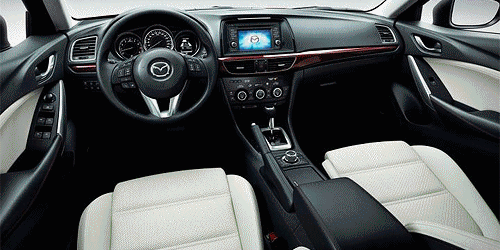 The Mazda fans will have a pleasant déjà vu when entering the new product. Mazda6 doesn’t deny it shares platform with CX-5, but the easiest way of finding that out is the central console, which is also the same for both of them. Far away from being a bad thing, it means these cars were designed to have some connection, therefore estabilishing a luxury car family composed by the crossover, the sedan and the station wagon and the hatchback who will also come later. Even though there’s no news concerning the shapes of the console, it’s nice to see the shiny red painting at the part who divides it above and beneath the air conditioner outlets: the resemblance with polished wood gives the same idea of sophistication, but the red color takes away the ‘80s car’s impression. In fact, it’s hard to find this car too old when we can enjoy all its tecnhology package: besides the giant touchscreen which controls the entertainment system, it’s main highlights are TomTom GPS navigation, BiXenon headlamps, start/stop tecnhology and the debut of i-ELOOP, Mazda’s regenerative braking system. As almost every recent car, this sedan has a lot of technologies with focus at the efficiency improvement.
The Mazda fans will have a pleasant déjà vu when entering the new product. Mazda6 doesn’t deny it shares platform with CX-5, but the easiest way of finding that out is the central console, which is also the same for both of them. Far away from being a bad thing, it means these cars were designed to have some connection, therefore estabilishing a luxury car family composed by the crossover, the sedan and the station wagon and the hatchback who will also come later. Even though there’s no news concerning the shapes of the console, it’s nice to see the shiny red painting at the part who divides it above and beneath the air conditioner outlets: the resemblance with polished wood gives the same idea of sophistication, but the red color takes away the ‘80s car’s impression. In fact, it’s hard to find this car too old when we can enjoy all its tecnhology package: besides the giant touchscreen which controls the entertainment system, it’s main highlights are TomTom GPS navigation, BiXenon headlamps, start/stop tecnhology and the debut of i-ELOOP, Mazda’s regenerative braking system. As almost every recent car, this sedan has a lot of technologies with focus at the efficiency improvement.
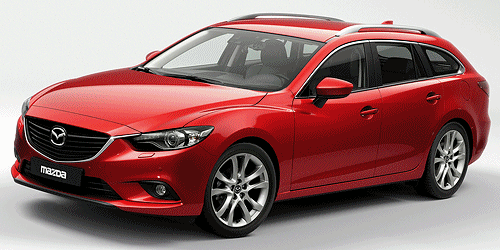 And now is the moment when we talk about Skyactiv, the brand’s new engines family. The upgraded performance comes with improvements such as high compression ratios, special plumbing to reduce combustion temperature and lightweight parts, not to mention direct fuel injection, multiple-clutch transmission, turbocharging and variable valve timing. The Russian market will have two 4-cylinder options: a 2.0 with 134 hp and a 2.5 with 189 hp – both will use the six-speed Skyactiv automatic transmission, but the smaller one will have it as an optional and use the manual one by standard, with also six speeds. The security department obviously follows this huge level, and presents intelligent headlights, blind spot monitoring, trajectory deviation warning and Smart City, a system which brakes the car by itself if the driver doesn’t react to an imminent collision at 30 km/h (18 miles) or less. It was announced that the US-market information will be published in a few days. Fuel mileage and emissions information weren’t presented until now, but Mazda will start the deliveries still at this year.
And now is the moment when we talk about Skyactiv, the brand’s new engines family. The upgraded performance comes with improvements such as high compression ratios, special plumbing to reduce combustion temperature and lightweight parts, not to mention direct fuel injection, multiple-clutch transmission, turbocharging and variable valve timing. The Russian market will have two 4-cylinder options: a 2.0 with 134 hp and a 2.5 with 189 hp – both will use the six-speed Skyactiv automatic transmission, but the smaller one will have it as an optional and use the manual one by standard, with also six speeds. The security department obviously follows this huge level, and presents intelligent headlights, blind spot monitoring, trajectory deviation warning and Smart City, a system which brakes the car by itself if the driver doesn’t react to an imminent collision at 30 km/h (18 miles) or less. It was announced that the US-market information will be published in a few days. Fuel mileage and emissions information weren’t presented until now, but Mazda will start the deliveries still at this year.
05/08/2012 update: Yesterday the station wagon was released, still at the Moscow Auto Show. And, as the sedan, the design is one of its many qualities. It’s impressive to see how that casual but elegant style didn’t lost anything when had to be used at the kind of car whose form usually makes more concessions to the function – it still looks large as the luxury car have to be, but doesn’t look excessively large, like the American wagons until the 1990s. This excellent impression came because of the attention to some details that when suppressed give a terrible result. One example is the rear doors, which have different design from the ones used at the sedan so the windows could be changed to the best possible design without any problem. The “fifth door” is also surely exclusive, but its big inclination was decisive to maintain the overall style. However, a nice detail is that Mazda has found how to highlight the connection with the sedan even at the section where those car bodies most differ: the tail lights are the same, so as the metal bar above them. Speaking of the trunk, it’ll surely have different measures from the sedan’s, but they still aren’t known. Besides that, all the rest is shared between the two cars.
Opel Cascada
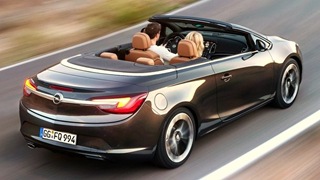 Is there a better way of driving than with the whole sky above you? The European side of GM now releases its third whole new product in such a short time, in a very commendable strategy of recovering from the current financial crisis of its homeland. This kind of car has a whole different focus from its urban siblings, and Opel recognizes that at first by this cabriolet’s construction, but also by placing Cascada (Spanish for “waterfall”) in a special spot of their showroom. But you can read more details about all this in the s article.
Is there a better way of driving than with the whole sky above you? The European side of GM now releases its third whole new product in such a short time, in a very commendable strategy of recovering from the current financial crisis of its homeland. This kind of car has a whole different focus from its urban siblings, and Opel recognizes that at first by this cabriolet’s construction, but also by placing Cascada (Spanish for “waterfall”) in a special spot of their showroom. But you can read more details about all this in the s article.
Convertible cars usually have this big emotional appeal also because this car style has been strongly associated with the high performance models. There was built a double image to expose to the public, where the automakers usually offer the same level of luxury and technology but in two different “wrappings”: the cabriolet or roadster receives the ones who only want to enjoy the weather in a fancy car, while the coupes attract the high-speed fans with the better aerodynamics that only a closed-roof car can provide. But Cascada ends up looking for a different kind of customer because it doesn’t focus at the highest top speed. Opel’s latest release makes direct competition with Peugeot 308 CC, Renault Mégane Cabriolet and VW Golf Cabrio, for example. They’re based at the mid-sized line of their brands and don’t try to seem different from them at all. Instead, they want to catch those buyers who normally would take a sedan or a station wagon, but having this option decide to travel with the family in bigger style. They come only with two doors to maintain the informal personality, instead of looking like a sedan who lost its roof, but seating four is their biggest conceptual difference from the roadsters: those are the roofless part who focus at the performance, therefore take only two occupants.
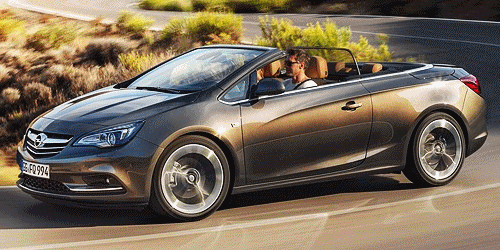 As what was said at the beginning of this article, Cascada will have this special attention at Opel’s showroom due to the fact that this brand works with many urban categories, therefore focusing at hatchbacks, sedans and minivans instead of coupes and cabriolets – before this one they had the TwinTop versions of Astra J and Tigra B, some years ago. But Cascada is more different than these ones when it comes to the structure, because its platform is exclusive, combining parts from Astra and Insignia. This explains the car’s design, which starts looking very much like Astra but changing into a whole different style, still using lots of Opel’s design rules but with a really classy result, without any excesses of strong lines in order to compose a solid, sophisticated look which ends at one of the better-looking rears of its category. All this external talent is followed by an elegant interior, with high-quality materials and complete trim levels. However, as it comes with a much stronger charisma than the urban Astra line, it seems that Opel would like to sell it a little separated from its base, in order to also seduce some of the Insignia buyers. They all must be pleased to choose between the lots of engine options that will be available, the ten external color options or the three options for the fabric roof, whose operation takes only 17 seconds.
As what was said at the beginning of this article, Cascada will have this special attention at Opel’s showroom due to the fact that this brand works with many urban categories, therefore focusing at hatchbacks, sedans and minivans instead of coupes and cabriolets – before this one they had the TwinTop versions of Astra J and Tigra B, some years ago. But Cascada is more different than these ones when it comes to the structure, because its platform is exclusive, combining parts from Astra and Insignia. This explains the car’s design, which starts looking very much like Astra but changing into a whole different style, still using lots of Opel’s design rules but with a really classy result, without any excesses of strong lines in order to compose a solid, sophisticated look which ends at one of the better-looking rears of its category. All this external talent is followed by an elegant interior, with high-quality materials and complete trim levels. However, as it comes with a much stronger charisma than the urban Astra line, it seems that Opel would like to sell it a little separated from its base, in order to also seduce some of the Insignia buyers. They all must be pleased to choose between the lots of engine options that will be available, the ten external color options or the three options for the fabric roof, whose operation takes only 17 seconds.
Honda Brio Amaze
 The strategy of showing “teasers” few days before a car release is proving itself very successful for the automakers, when it comes to increase the media and public’s interest. The simple posting of a picture or a video on the Internet showing only a part of the about-to-arrive vehicle is enough to attract the world’s curiosity, no matter if it’s a super sports car or a low-cost hatchback. That’s what Honda used to attract the spotlights to their compact sedan, which will try to prosper in a very competitive market, at many countries.
The strategy of showing “teasers” few days before a car release is proving itself very successful for the automakers, when it comes to increase the media and public’s interest. The simple posting of a picture or a video on the Internet showing only a part of the about-to-arrive vehicle is enough to attract the world’s curiosity, no matter if it’s a super sports car or a low-cost hatchback. That’s what Honda used to attract the spotlights to their compact sedan, which will try to prosper in a very competitive market, at many countries.
In the past few years, the multi-category brands have understood that although the emergent markets’ car demands are very particular, these countries return their fulfillment with surprising sales, frequently comparable to what they get on their homelands with more expensive vehicles. Mazda already sells Mazda2, Mitsubishi created Mirage with big focus at the efficiency, Toyota released Etios, and now Honda follows this track with Brio. Their idea is to repeat their brands’ quality at construction, durability and technology, but with some concessions in order to offer the cheapest final price it’s possible. Competitive pricing really is a strong sales argument, but the average customer became each time more demanding, in all categories. In nowadays, the cheap cars have to keep low prices but without “seeming” it: they can’t have black bumpers and small wheels anymore, for example. Besides that, the interior needs to offer the biggest space it’s possible, and with big trim levels at the most expensive versions – those are the very particular demands that countries like Brazil, China and India present for their low-budget categories. But there’s one more aspect that these customers appreciate very much, and therefore makes a huge part of these cars’ success: the design.
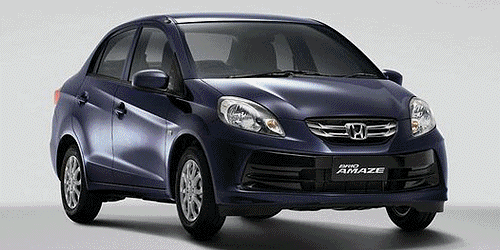 If the buyers want their car to resemble more sophisticated ones, they expect it to start this by the exterior. Some take advantage of their brands’ visual identity, such as the latest Fiat Palio and Chevrolet Onix (both created in Brazil), with good proportions and no external parts shared with other cars, avoiding drawing freedom losses. These came precisely from two of the best-selling brands in one of the most experienced country when it comes to small cars, which denotes all the expertise they have. And here lies the Japanese problem, which was those other brands’ issue decades ago: as these cars are their very first incursions among the low-cost category, they still don’t have experience with them. So their first idea is to adapt what’s already done with the more expensive ones, but the problem is that it doesn’t work as the first impression may think. The size differences make some elements look good in some cars but not in others, not to mention the customer kind each car will have – try to imagine Hyundai Equus with Mini Cooper’s round headlights or Peugeot 107 with the first Land Rover Discovery’s roof windows, for example. When it comes to Brio, the original hatchback wasn’t already the best design example to remember, but what makes the sedan worse is the wrong choice of the elements.
If the buyers want their car to resemble more sophisticated ones, they expect it to start this by the exterior. Some take advantage of their brands’ visual identity, such as the latest Fiat Palio and Chevrolet Onix (both created in Brazil), with good proportions and no external parts shared with other cars, avoiding drawing freedom losses. These came precisely from two of the best-selling brands in one of the most experienced country when it comes to small cars, which denotes all the expertise they have. And here lies the Japanese problem, which was those other brands’ issue decades ago: as these cars are their very first incursions among the low-cost category, they still don’t have experience with them. So their first idea is to adapt what’s already done with the more expensive ones, but the problem is that it doesn’t work as the first impression may think. The size differences make some elements look good in some cars but not in others, not to mention the customer kind each car will have – try to imagine Hyundai Equus with Mini Cooper’s round headlights or Peugeot 107 with the first Land Rover Discovery’s roof windows, for example. When it comes to Brio, the original hatchback wasn’t already the best design example to remember, but what makes the sedan worse is the wrong choice of the elements.
The front needs to be short but keeping good space for the engine, so it’s a little tall. But using a very small central air intake with big headlights and big lower intake with large blank spaces between than gives the overall impression that these parts are “lost”, visually disconnected. The very strong creases at the side give a dynamism sensation at bigger cars, but in this sedan seem only too heavy. And the back would really deserve credit for the sophistication idea of the chrome details, if it wasn’t for the very, very small size seen at the pictures. The intention of projecting a small-scaled Civic or Accord is good, but this result seems like a squeezed version of those – at the side photo, have you seen how the roof falls to the trunk? Entering the car, its central console’s can’t be described without using “weird”, but the big internal space is a pleasant fact, along with the sophistication given by the three-colored coating and items such as the multimedia sound system. This car’s sales will begin with Thailand, going later to India, Indonesia and Malaysia. When it comes to the performance, it’ll maintain Brio’s 1.2 16v, with i-VTEC valve command and 90 hp with manual or CVT transmission options, but a very nice feature is the Econ mode: as in many other Honda vehicles, activating it changes several driving parameters to reduce fuel consumption.
BMW X6 2013
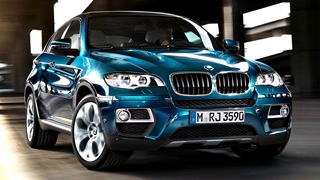 Observar os lançamentos do mercado automotivo nos últimos tempos tem estimulado muita gente a proferir uma frase digna de provocar as maiores doses de agonia nos profissionais do design: “os carros estão todos iguais”. Infelizmente existem mesmo alguns exemplos que validam esta afirmação quando vistos em certos ângulos, mas os que realmente merecem atenção estão no extremo oposto. Um destes ícones mais recentes do estilo automotivo é este crossover cuja nova fase acaba de desembarcar no Brasil.
Observar os lançamentos do mercado automotivo nos últimos tempos tem estimulado muita gente a proferir uma frase digna de provocar as maiores doses de agonia nos profissionais do design: “os carros estão todos iguais”. Infelizmente existem mesmo alguns exemplos que validam esta afirmação quando vistos em certos ângulos, mas os que realmente merecem atenção estão no extremo oposto. Um destes ícones mais recentes do estilo automotivo é este crossover cuja nova fase acaba de desembarcar no Brasil.
Comercializado no Brasil pela Eurobike, o mérito do X6 não vem apenas de atrair muitos olhares porque isso se obtém mesmo com carros de aparição mais comum. Sua diferença está em ser um daqueles automóveis que prendem o olhar mesmo das pessoas que não têm tanto interesse nestes produtos. É muito fácil se deter por alguns minutos observando em primeiro lugar os padrões diferentes de formas e volumes, culminando na clássica dúvida entre ele ser um utilitário ou um cupê. Essa curiosidade vem do contraste que a BMW exerceu com muito êxito, ao partir de traços imponentes e volumosos que poderiam gerar qualquer crossover atual (como o próprio irmão X5, por exemplo), mas aliá-los a uma queda de teto digna de um fastback. A outra parte deste encanto dos observadores se expressa em que passar tempo olhando o carro de um lado a outro só melhora a impressão que se teve de início. Não existe um só detalhe que pareça ter sido esquecido, ou recebido menor atenção. São vários vincos e relevos conectando uma forma à outra, criando um conjunto tão fortemente relacionado que entra no clube de exemplos como as fases atuais de Fiat Bravo e Ford Focus: com eles é melhor esperar a época de trocar o modelo por inteiro, porque executar redesenhos parciais sempre tiraria o equilíbrio do design original.
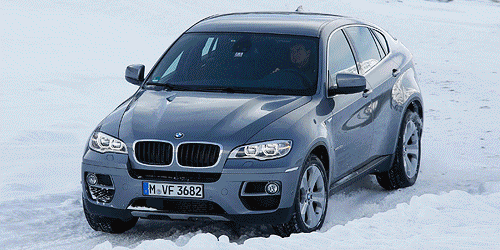 Talvez seja esta a razão de o exterior do X6 2013 não ter trazido mudanças maiores que parachoques re-estilizados e novos farois, que não têm problemas em conseguir a intenção de atualizar o modelo para a segunda etapa do seu ciclo de vida – este crossover foi lançado mundialmente em 2009. Quem teve mudanças maiores foi o interior, cuja maior evolução foi eliminar o túnel da transmissão, o que traz o sempre desejado assoalho plano na região do banco traseiro, criando espaço muito melhor para o quinto ocupante. É este banco que também teve o seu reprodutor de DVD trocado, com a tela ganhando posição central. Isso termina de compor uma cabine recheada do nível de luxo e tecnologia típico dos carros desta categoria, cujo console central traz o mesmo padrão de estilo dos demais BMW e também as várias opções de cor, para combinar com os também diversos tons de couro dos bancos em várias possibilidades. As unidades do novo X6 que vêm ao Brasil estarão disponíveis em duas versões: começando em R$ 344.950, a xDrive35i usa o 3.0 biturbo de seis cilindros, que gera 306 cv. Quem quer ainda mais força pode levar a xDrive50i, responsável pelo 4.4 V8 que passa dos 400 cv e eleva o preço a R$ 414.950.
Talvez seja esta a razão de o exterior do X6 2013 não ter trazido mudanças maiores que parachoques re-estilizados e novos farois, que não têm problemas em conseguir a intenção de atualizar o modelo para a segunda etapa do seu ciclo de vida – este crossover foi lançado mundialmente em 2009. Quem teve mudanças maiores foi o interior, cuja maior evolução foi eliminar o túnel da transmissão, o que traz o sempre desejado assoalho plano na região do banco traseiro, criando espaço muito melhor para o quinto ocupante. É este banco que também teve o seu reprodutor de DVD trocado, com a tela ganhando posição central. Isso termina de compor uma cabine recheada do nível de luxo e tecnologia típico dos carros desta categoria, cujo console central traz o mesmo padrão de estilo dos demais BMW e também as várias opções de cor, para combinar com os também diversos tons de couro dos bancos em várias possibilidades. As unidades do novo X6 que vêm ao Brasil estarão disponíveis em duas versões: começando em R$ 344.950, a xDrive35i usa o 3.0 biturbo de seis cilindros, que gera 306 cv. Quem quer ainda mais força pode levar a xDrive50i, responsável pelo 4.4 V8 que passa dos 400 cv e eleva o preço a R$ 414.950.


